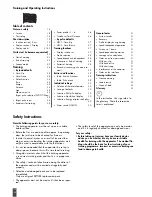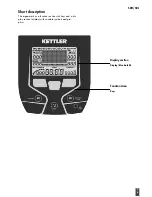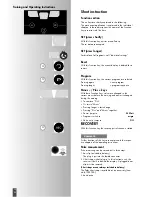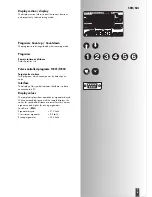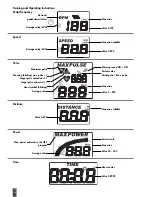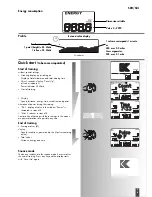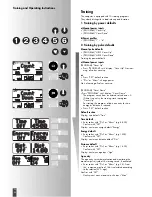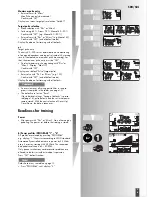
Glossary
Age
Entry for calculation of the maximum pulse.
Dimension
Units for display of km/h or mph, kjoule or kcal, hours (h) and
power (Watt)
Energy (real.)
Calculates the energy turnover of the body with an efficiency of
16,7% to provide the mechanical power. The remaining 83,3%
does the body convert to heat.
Energy (phys.)
Calculates the energy turnover of the device, physicaly
Fat burning pulse
Calculated value of: 65% MaxPuls
Fitness pulse
Calculated value of: 75% MaxPuls
Glossary
A collection of attempts for explanation.
HI symbol
With “HI” displayed, a target pulse is too high by 11 beats.
With HI blinking, the maximum pulse is exceeded.
LO symbol
With “LO” displayed, a target pulse is too low by 11 beats.
Manual –
Calculated value of: 40 – 90% MaxPuls
MaxPulse(s)
Calculated value of 220 minus years of age
Menu
Display in which values are to be entered or selected.
Power
Current value of the mechanical (braking) power in Watts,
which the ergometer converts into heat.
Profile
Change of performance over time or distance represented in the
points field.
Programs
Training possibilities requiring manual or program-determined
performances or target pulses.
Percent scale
Comparison display between current power and maximum
power (400/600W).
Points field
Display area with 30 x 16 points for representing performance
profiles as well as text and value displays.
Pulse
Recording of the heartbeat per minute
Recovery
Recovery pulse measurement at the end of training. From start
and end pulse of one minute the deviation and a fitness grade
are determined. For the same training, the improvement of this
grade is a measure for increase in fitness.
Reset
Deletion of display contents and restart of display.
hermore, it must be observed, that from age 30 on capability
decreases: for men approx. 1 % and for women 0.8 % per
year of age.
Example: man; 50 years; weight 75 kg
> 220 – 50 = 170 pulse/min. maximum pulse
> 3 Watts x 75 kg = 225 Watts
> Minus “age discount” (20 % of 225 = 45 Watts)
> 225 – 45 = 180 Watt (nominal default for maximum load)
Load intensity
Load pulse: the optimal load intensity is achieved at 65–75 %
(comp. diagram) of the individual cardiovascular performance.
This value changes depending on the age.
Scope of load
Duration of a training unit and its frequency per week:
The optimum scope of load is given, when over a longer period
65–75 % of the individual cardiovascular performance is achie-
ved.
Empirical rule:
You should choose the Watts power such that you are able to
stand the muscle load over a longer period.
Higher powers (Watt) should be yielded in connection with an
increased pedaling frequency. A too low pedaling frequency of
less than 60 rpm results in a pointedly static load of the muscu-
lature and thus to early exhaustion.
Warm-up
At the beginning of each ergometer training unit, you should for
3-5 minutes pedal with a slowly increasing load to warm and to
get your heart/circulation and your musculature moving.
Cool-down
The same importance has the so-called “cooling down”. After
each training unit you should continue pedaling against a slight
resistance for approx. 2-3 minutes.
The load for your further stamina training should basically be
increased over the scope of load, e.g. instead of 10 minutes
your training is 20 minutes or instead of 2 times a week 3 times
a week. Beside individual planning of your cardio training you
can fall back on the training programs integrated in the training
computer (comp. page 9 cont.).
Training frequency
Duration of training
daily
10 minutes
2–3 times a week
20–30 minutes
1–2 times a week
30–60 minutes
Pulsediagramm
Fitness and Fat Burner
220
200
180
160
140
120
100
80
Pulse
Age
20 25 30 35 40 45 50 55 60 65 70 75 80
Maximalpulse
(220 minus Age)
Fitnesspulse
(75% of Max.Pulse)
Fat combustion pulse
(65% of Max.Pulse)
90
Training and Operating Instructions
32
GB

